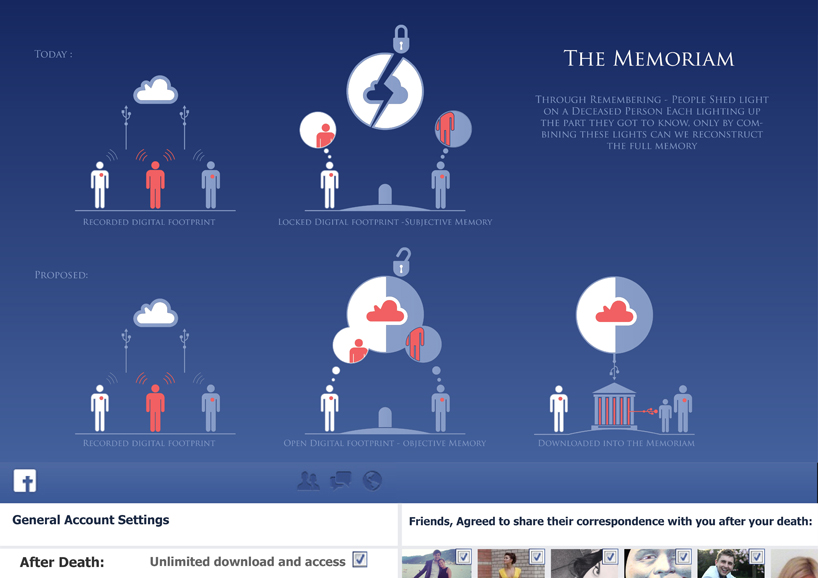
The Memoriam by SKudryashev from uk
designer's own words:
In Memoriam Project
The project seeks to explore the ways individuals mourn and remember and the tools used in this delicate process. Social media has re-defined the communication landscape for the living but its impact on the interaction with the deceased is yet to be tested. It is our belief, though, that social media will and should re-configure the process by which we mourn and remember those who passed away.
Today, we treat our social network profiles, part of our digital footprint, as a continuation of oneself. Each person leaves behind vast amounts of information. Never before has this information been better recorded, archived, presented and shared. We leave a track of our life the accuracy of which measures in seconds.
In a study of “dead” profiles on Facebook, it is notable that in the act of mourning and remembrance people often turn to the digital “shrine” to “speak” directly to the deceased through his profile, in this way sharing their grief and seeking support from others.
The potential of this is vast…Imagine, tracking the life of you great grandparent down to a second and exact words he would have used. However, the way we come to terms with death today remains blind to this potential and remains very segregated - down to individual memory and personal recollection. What if we would like to construct a dialogue with the deceased: to understand and shape an accurate picture of the person and his personality? Just being able to revisit your great parent’s profile would not be enough; you would want access to their personal messages and even more: the responses to them. Practically this can be resolved today:
Account Settings > General Settings > Unlimited Access to your information after Death.
Prompting your friends to opt:
Share all Correspondents with the Deceased / Hide Correspondents with the Deceased till I die
The idea is that the best way to remember someone is not to whitewash their life, but to represent it precisely as it was: chaotic, rich, colorful, and most probably shared.
This makes the Memoriam Possible – A Museum erected simply by plugging in a USB stick; inside which a graphic memoir of a person’s life unveils. The person’s digital profile is downloaded and rearranged into a special experience where every element has a predetermined location and progression. The building typology chosen for this is a Cathedral, due to its sequential repetition of spaces; which in its 10 bays can represent the chronology of a lifecycle. The stone structure is replaced by steel masts and layers of fabric; ornament and decoration by projections. The space blends into the content that it displays without overpowering it.
Looking up the space is ruled by perspective. The domes and the columns widen in a way that the imagery projected onto them is easy to perceive. Visitors can choose to observe the space either reclined in custom furniture/projector located directly beneath each dome, or by looking at the reflections in the mirror-like polished floor.
The project re-imagines mourning as a concept through architectural design. While the experience it proposes could be both private or shared, there is a clear celebration of Life that was lived, rather than the daunting solitary mourning at the grave. If one accepts that the psychology of grieving is shifting from “Dead and buried” approach, to a “Death as a summary of life” approach, then it is clear that the process of mourning and remembrance has to gravitate towards a dialogue.
The digital self is timeless, which in itself is a soothing thought, an act of transformation from the physical to the digital. In Memoriam.
Concept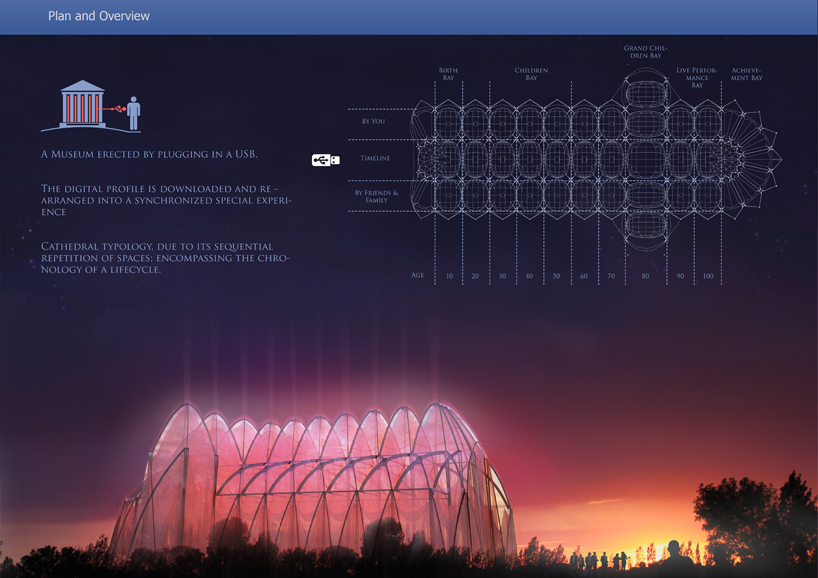
Plan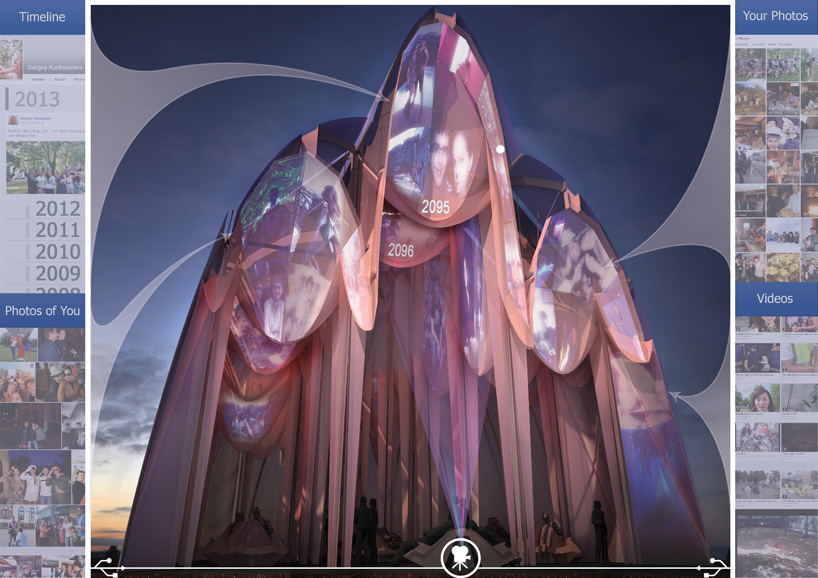
Short Section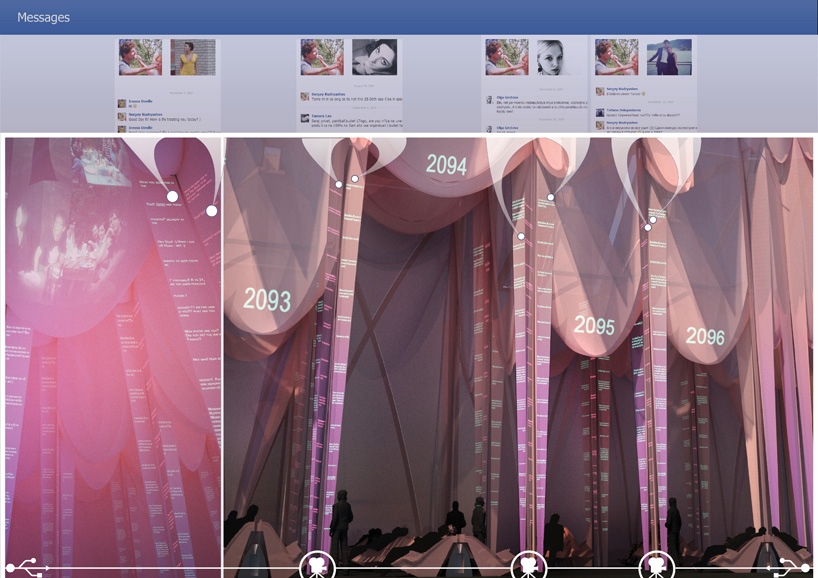
Long Section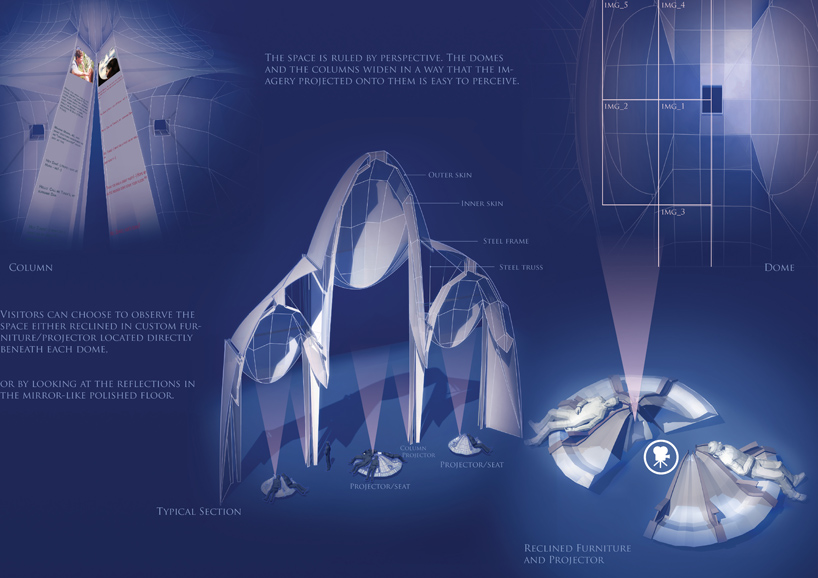
Detail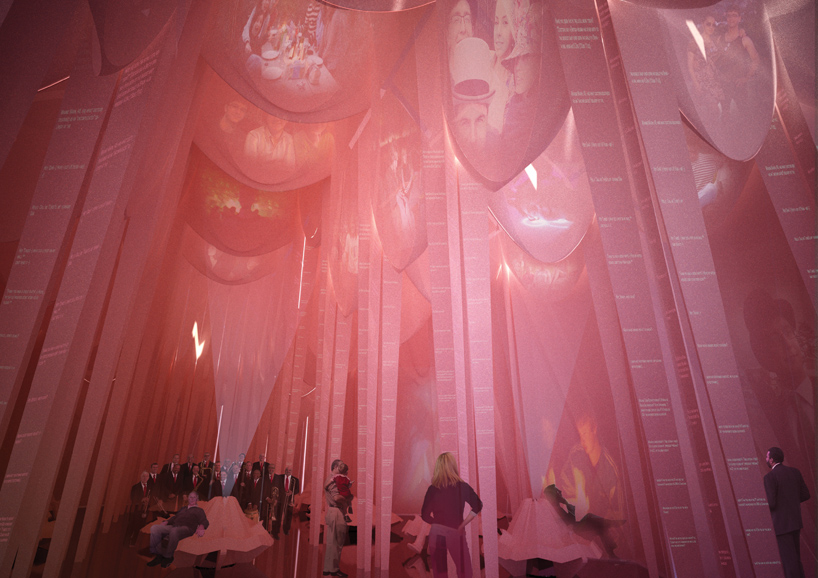
Visual